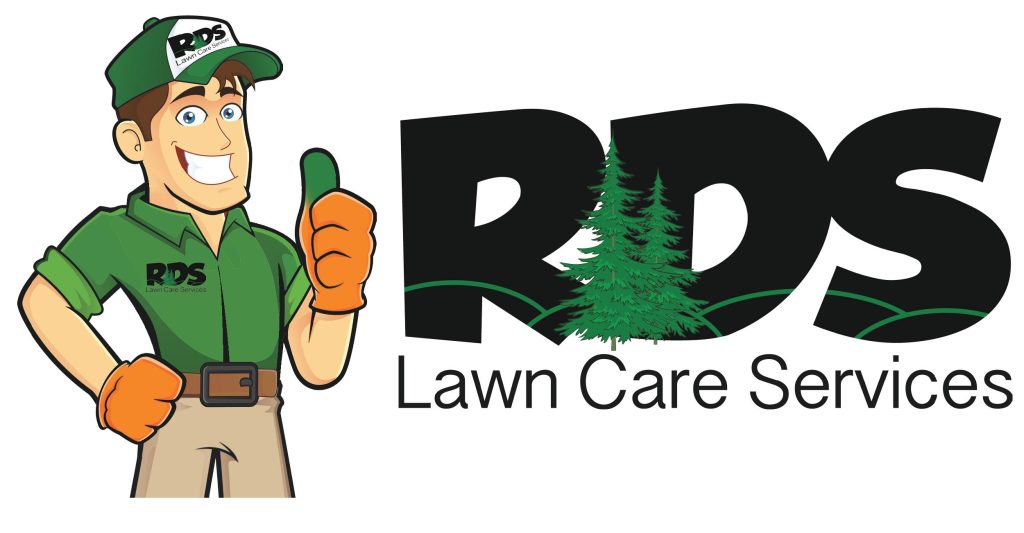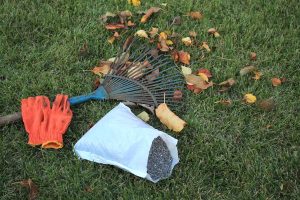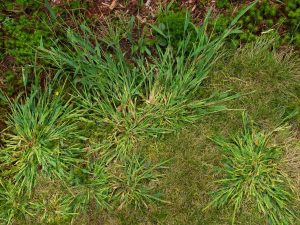Lawn grubs—also known as white grubs—are the immature form of beetles like Japanese beetles, June bugs, and chafers. These pests feed on grass roots, causing thinning, brown patches, and even turf that peels back like a carpet. At RDS Lawn Care, we know that effective grub control isn’t just about killing them—it’s about timing, prevention, and choosing the right treatment method for your lawn’s ecosystem.
What Are Lawn Grubs?
Lawn grubs are C-shaped larvae with white, soft bodies and brown heads. They live in the soil beneath your turf, usually between late summer and early fall. These pests are most active during this period, feeding on grass roots and weakening the entire turf structure.
If you’re noticing spongy turf, discolored patches, or increased activity from skunks, raccoons, or birds digging in your yard, it’s likely grub damage.
The Lawn Grub Life Cycle: Why Timing Matters
Grub control is all about understanding timing. These pests follow a seasonal life cycle:
- Spring: Dormant grubs from the previous year begin to feed again briefly before turning into adult beetles.
- Summer: Adults lay eggs in the soil. These hatch into new grubs by mid-to-late summer.
- Fall: This is when the new generation of grubs is actively feeding—and this is the ideal window for treatment.
- Winter: Grubs burrow deeper to overwinter.
For the most effective control, treatments should be applied in late summer or early fall, when grubs are young and closer to the surface.
Signs You Have a Grub Infestation
While some grub presence is natural (up to 5–10 per square foot can be tolerable), a larger population leads to visible damage.
You might observe:
- Dead or browning grass patches that don’t respond to watering.
- Turf that lifts easily, like a piece of carpet.
- Animal digging, particularly by birds or nocturnal wildlife.
A quick test: Pull up a small section of turf and count the grubs in a square foot. More than 10? It’s time to take action.
Curative vs. Preventive Grub Control: What’s the Difference?
Managing lawn grubs effectively starts with choosing the right approach at the right time. At RDS Lawn Care, we break this into two core strategies—curative and preventive treatments. Each has its own timing, chemistry, and ideal use case, and understanding the difference is critical to protecting your turf year-round.
Curative Grub Control: Emergency Response After Damage
Curative treatments are your go-to solution when grubs are already active and feeding on your lawn’s root system, typically from late summer into early fall (August–October). At this stage, grub larvae—usually in their third instar—are large and voracious, and the damage is often visible as wilting or browning turf that lifts like a carpet.
We typically use fast-acting insecticides like carbaryl (Sevin) or trichlorfon (Dylox) for curative control. These products are contact insecticides, meaning they kill grubs on exposure but only work if grubs are present and actively feeding. While effective in the short term, they offer no residual protection—meaning they don’t prevent future infestations.
Proper irrigation immediately after application is crucial to ensure the product reaches the root zone where grubs reside. Keep in mind, curative treatments work best within the first 3-4 weeks of visible damage. Waiting longer often means the turf is too damaged to recover, even if the grubs are eliminated.
Preventive Grub Control: Proactive and Long-Term
Preventive treatments focus on stopping grubs before they hatch and start feeding—typically applied from late spring to mid-summer (May to early July), depending on your region and soil temperatures. These treatments target the first instar larvae, which are the most vulnerable stage of the grub life cycle.
Products like chlorantraniliprole (Acelepryn) and imidacloprid (Merit) are the gold standard in preventive care. They offer season-long control and are incorporated into our proactive turf health programs at RDS. Chlorantraniliprole, in particular, has the added benefit of being low-toxicity for pollinators like bees, making it a more environmentally responsible choice.
Preventive applications don’t offer instant results like curative products, but they are highly effective when timed correctly—typically just before adult beetles (like Japanese beetles or June bugs) begin laying eggs in the soil.
Are Natural Solutions Effective?
We’re often asked about biological grub control. While not as quick as chemical solutions, options like milky spore and beneficial nematodes (Heterorhabditis bacteriophora) can be effective over time—especially when used preventively over multiple seasons.
These natural methods work best when soil temperatures and moisture levels are ideal, and they require consistent application over several years to build up efficacy.
How RDS Lawn Care Handles Lawn Grub Problems
At RDS Lawn Care, we don’t just treat the symptoms—we address the root of the issue. Our grub control services across North and South Carolina are based on integrated pest management (IPM) principles.
We begin with a comprehensive lawn assessment, checking for signs of grub activity, turf health, and soil conditions. Depending on the severity, we’ll apply a curative or preventive solution tailored to your lawn type, regional climate, and seasonal timing.
We also advise on long-term practices, like improving soil aeration, irrigation timing, and fertility balance, to help your lawn recover and naturally resist future infestations.
Pro Tips to Prevent Grubs From Returning
Once you’ve treated a grub infestation, it’s essential to take preventive steps moving forward. Keeping your lawn healthy is the best defense. That includes:
- Maintaining proper mowing height: Avoid cutting grass too short—taller blades promote deeper roots.
- Avoiding overwatering: Grubs thrive in moist soil; water deeply but less frequently.
- Overseeding in fall: This helps fill in thin areas and crowds out beetle egg-laying zones.
Regular maintenance and annual grub inspections, like those offered in our RDS lawn care plans, can keep your turf resilient year-round.
Final Thoughts: Timing Is Key to Grub Control
To effectively kill lawn grubs, you need to strike when they’re most vulnerable—as newly hatched larvae in late summer or early fall. Whether you choose a chemical, biological, or a hybrid approach, consistency and timing are everything.
If you’re in North or South Carolina and suspect grub damage or want to prevent it, RDS Lawn Care is here to help. We blend industry expertise with region-specific lawn strategies to keep your yard lush, green, and grub-free all year long.




